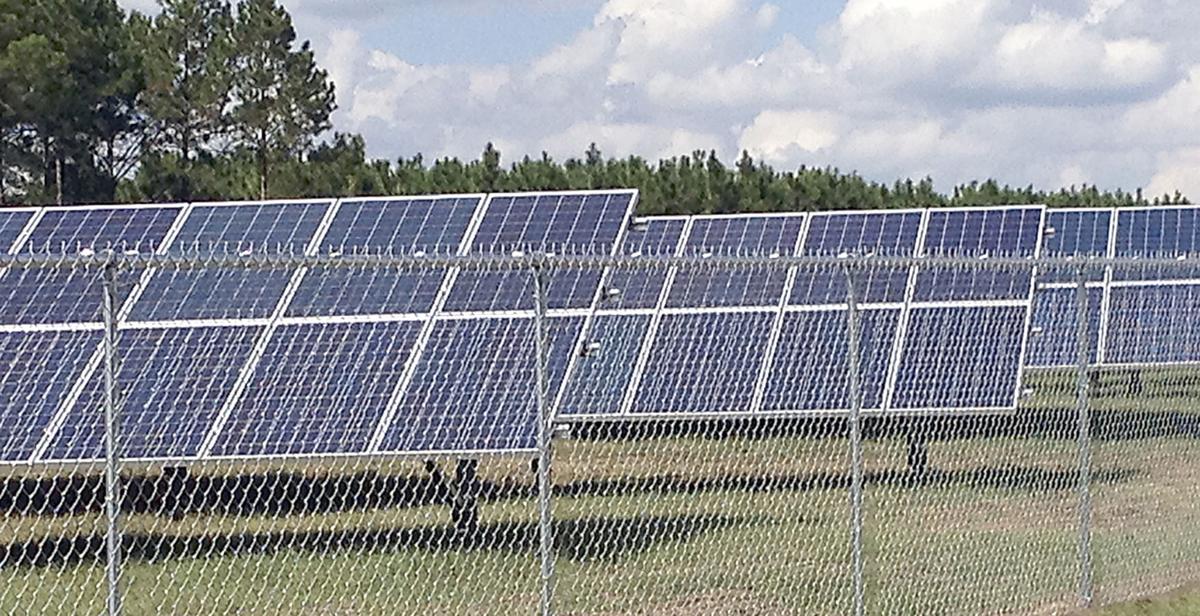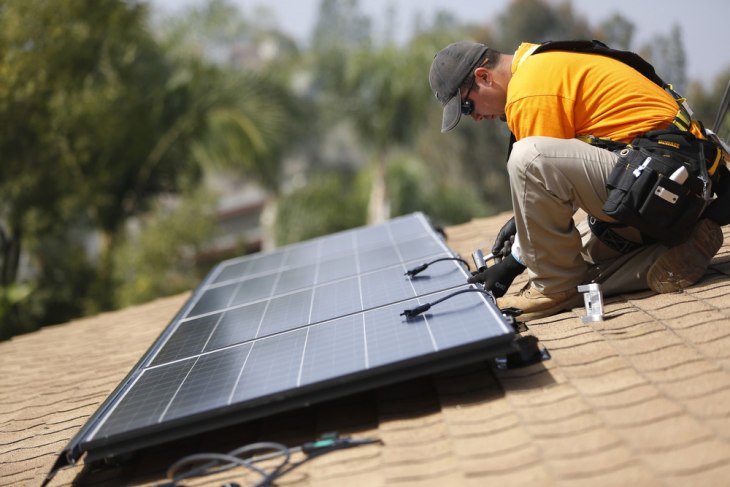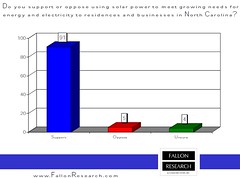Net metering of solar energy works fine in California, where it
increasingly provides electricity to meet peak demand.
Georgia has a 2001 law that requires power utilities to do
a version of net metering, but it’s a weak version and there’s a low
cap on how much you can sell back to the utility.
The Georgia version,
according to GEFA:
 Net metering is the process whereby an energy consumer produces energy
and then sells some or all of this energy to the “grid”,
or major
energy producers in the state. Under Georgia’s net metering laws,
state residents and businesses can purchase and operate green energy
capital, including photovoltaics, wind energy and fuel cells, and use
this energy on-site. These residents and businesses may then sell any
un-used, additional energy produced on-site to their energy provider.
There is a maximum of 10 kilowatts (kW) for residential applications
and up to 100 kW for commercial applications.
Net metering is the process whereby an energy consumer produces energy
and then sells some or all of this energy to the “grid”,
or major
energy producers in the state. Under Georgia’s net metering laws,
state residents and businesses can purchase and operate green energy
capital, including photovoltaics, wind energy and fuel cells, and use
this energy on-site. These residents and businesses may then sell any
un-used, additional energy produced on-site to their energy provider.
There is a maximum of 10 kilowatts (kW) for residential applications
and up to 100 kW for commercial applications.
As you can see by GEFA’s pie chart, solar energy was too small to chart
as a source of energy in Georgia as of 2004.
With solar, we can burn less coal and uranium.
Solar Energy Industries Association (SEIA) has a report,
Solar Net Metering in California,
Protecting Net energy metering (NEM) is the top policy priority of the
Solar Energy Industries Association (SEIA) for California in 2012. NEM
is a billing arrangement that allows utility customers to offset some or
all of their energy use (up to 1 MW) with selfgenerated renewable energy.
The definition sounds the same, except for the cap: 1 megawatt
is 1000 kilowatts, so California’s current cap is 100 times the Georgia
residential cap and 10 times the Georgia commercial cap, with
apparently no distinction between residential and commercial.
The result is this:
Continue reading →








